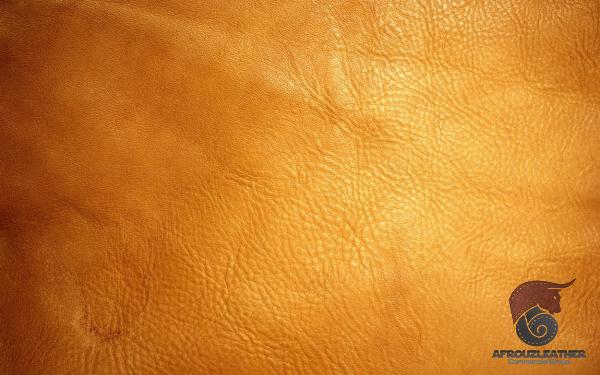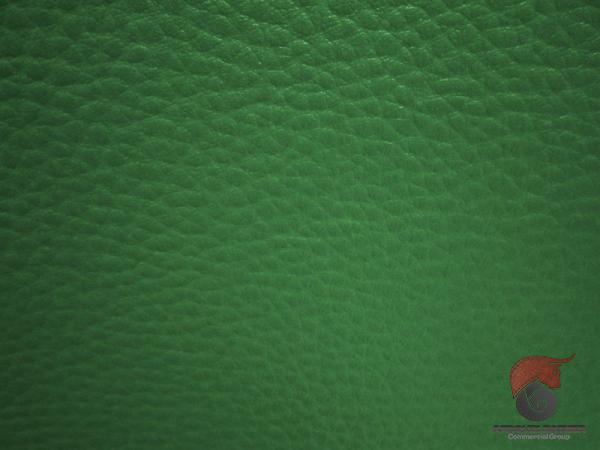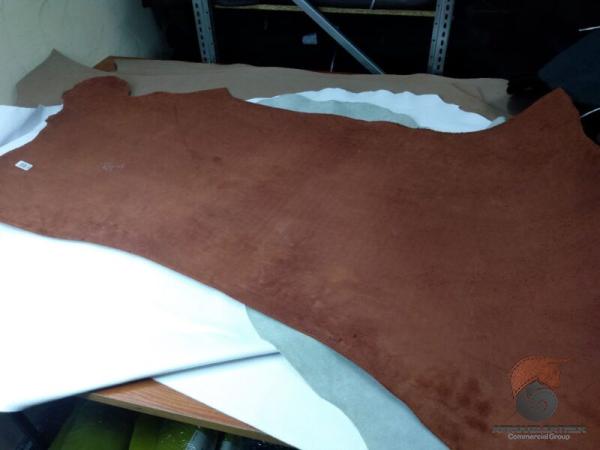Leather is one of the most versatile and sought-after materials in the fashion industry. It exudes a sense of sophistication, durability, and luxury. When it comes to leather production, two commonly used sources are lambs and calves. Each type of leather offers specific characteristics and advantages that can influence consumer choices. In this article, we will delve into the key differences between lamb leather and calf leather, exploring their qualities, uses, and environmental implications. 1. Characteristics of Lamb Leather: Lamb leather is known for its exceptional softness and lightweight feel. The inherent suppleness of lamb leather makes it a popular choice for producing high-end garments, accessories, and luxury goods.
leather
 The fine grain structure of lamb skin contributes to a smoother and more uniform appearance, making it particularly suitable for items requiring intricate designs or delicate detailing. The suppleness and pliability of lamb leather make it an excellent choice for drapery and conforming to body contours. 2. Characteristics of Calf Leather: Calf leather, on the other hand, possesses a thicker and more robust nature compared to lamb leather. It is renowned for its durability and sturdiness. Calf leather products are prized for their toughness and ability to withstand wear and tear. The strength and structure of calf leather make it ideal for the production of shoes, belts, and handbags that require a higher level of resilience. The texture of calf leather displays a prominent grain pattern, elevating the product’s appearance and enhancing its visual appeal.
The fine grain structure of lamb skin contributes to a smoother and more uniform appearance, making it particularly suitable for items requiring intricate designs or delicate detailing. The suppleness and pliability of lamb leather make it an excellent choice for drapery and conforming to body contours. 2. Characteristics of Calf Leather: Calf leather, on the other hand, possesses a thicker and more robust nature compared to lamb leather. It is renowned for its durability and sturdiness. Calf leather products are prized for their toughness and ability to withstand wear and tear. The strength and structure of calf leather make it ideal for the production of shoes, belts, and handbags that require a higher level of resilience. The texture of calf leather displays a prominent grain pattern, elevating the product’s appearance and enhancing its visual appeal.
Specifications of leather
 3. Leather Quality and Appearance: Lamb leather is often considered to have a more refined and luxurious appearance due to its fine and even grain structure. The silky softness of lamb leather imparts a premium feel that is highly sought after by luxury brands. Calf leather, on the other hand, features a coarser and more distinct grain texture that adds a touch of sophistication and ruggedness to the overall aesthetic. While both types of leather hold aesthetic appeal, the choice ultimately depends on the desired outcome and intended use. 4. Comfort and Wearability: When it comes to comfort and wearability, lamb leather is often more comfortable to wear due to its superior softness and flexibility. It conforms easily to the body, making it an excellent choice for apparel and any item that requires a closer fit. The lightweight nature of lamb leather also contributes to its comfort factor. Calf leather, although slightly stiffer, offers excellent durability and support, making it particularly suitable for footwear, accessories, and other products that require a more structured form. 5. Environmental Implications: The production of leather, regardless of its source, has environmental implications.
3. Leather Quality and Appearance: Lamb leather is often considered to have a more refined and luxurious appearance due to its fine and even grain structure. The silky softness of lamb leather imparts a premium feel that is highly sought after by luxury brands. Calf leather, on the other hand, features a coarser and more distinct grain texture that adds a touch of sophistication and ruggedness to the overall aesthetic. While both types of leather hold aesthetic appeal, the choice ultimately depends on the desired outcome and intended use. 4. Comfort and Wearability: When it comes to comfort and wearability, lamb leather is often more comfortable to wear due to its superior softness and flexibility. It conforms easily to the body, making it an excellent choice for apparel and any item that requires a closer fit. The lightweight nature of lamb leather also contributes to its comfort factor. Calf leather, although slightly stiffer, offers excellent durability and support, making it particularly suitable for footwear, accessories, and other products that require a more structured form. 5. Environmental Implications: The production of leather, regardless of its source, has environmental implications.
buy leather
 However, it’s important to note that the environmental impact of leather production goes beyond the choice between lamb and calf. It encompasses factors such as tanning processes, waste management, and the industry’s overall sustainability efforts. Ethical considerations, including animal welfare and responsible sourcing, are also significant factors to take into account. When making environmentally conscious choices, consumers should consider not only the type of leather but also the practices followed by the manufacturers. Conclusion: Choosing between lamb leather and calf leather involves weighing the desired qualities of softness, durability, appearance, and personal style preferences. Lamb leather appeals with its exceptional softness, drapability, and refined appearance, making it a preferred choice for luxury fashion items. Calf leather, on the other hand, offers durability, strength, and a more structured appearance suitable for products that require resilience and endurance. Ultimately, the decision between lamb and calf leather should consider the intended use, desired aesthetics, comfort, and the environmental impact associated with the leather production process.
However, it’s important to note that the environmental impact of leather production goes beyond the choice between lamb and calf. It encompasses factors such as tanning processes, waste management, and the industry’s overall sustainability efforts. Ethical considerations, including animal welfare and responsible sourcing, are also significant factors to take into account. When making environmentally conscious choices, consumers should consider not only the type of leather but also the practices followed by the manufacturers. Conclusion: Choosing between lamb leather and calf leather involves weighing the desired qualities of softness, durability, appearance, and personal style preferences. Lamb leather appeals with its exceptional softness, drapability, and refined appearance, making it a preferred choice for luxury fashion items. Calf leather, on the other hand, offers durability, strength, and a more structured appearance suitable for products that require resilience and endurance. Ultimately, the decision between lamb and calf leather should consider the intended use, desired aesthetics, comfort, and the environmental impact associated with the leather production process.

Your comment submitted.